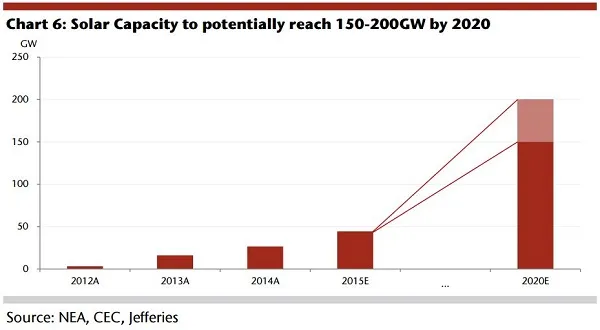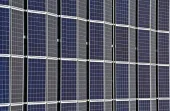
China's solar capacity predicted to hit a whopping 150-200 GW by 2020
This pushes yearly average instalment to 20-25GW.
According to a recent sector report by Jefferies Equity Research on China's alternative energy, the solar industry is gathering steam in 2015, with solar capacity in China set to reach 46GW, from 28GW in 2014. Early reports on the 13th Five-Year Plan suggest that the 2020 GW target for solar may be raised from 100GW to 150-200GW, translating to an average instalment of 20-25GW per annum.
With FiTs promising to lock in returns, project developers with a long pipeline of projects who can execute are attractive propositions.
The market remains cautious on China’s solar given the industry’s booms and busts in the past, not to mention China’s own growing pains in the wind power industry.
"The industry's expansion into the downstream, more specifically, utility scale solar power plants, promises to change their cash flow profile. In time, cash flow and earnings will be less vulnerable to falling ASPs, but rather more stable and predictable, in our view," Joseph Fong, equity analyst with Jefferies Equity Research, said.
Here's more from Joseph Fong:
The downstream is the part of the value chain where it is possible to build sustainable value, in our opinion. The industry appears to concur as most publicly listed solar companies in China have plans to move downstream. The challenge remains execution.
In 2014, China only added 10.6GW of solar capacity as many developers struggled to meet their targets.
In 2015, solar development in China appears to be gaining momentum thanks to the greater flexibility afforded to developers, access to finance and permits. According to NEA, China has connected 7.7GW, +133% YoY, including ~1GW of DG PV projects (vs. 3.3GW of PV installation and ~1GW of DG PV projects in 1H14).
In Q3, China added another 2.8GW of projects. Distributed generation does not appear to be ready to drive solar growth but developers can more aggressively build utility projects as the government has not set a hard target for distribution generation this year.



















 Advertise
Advertise







